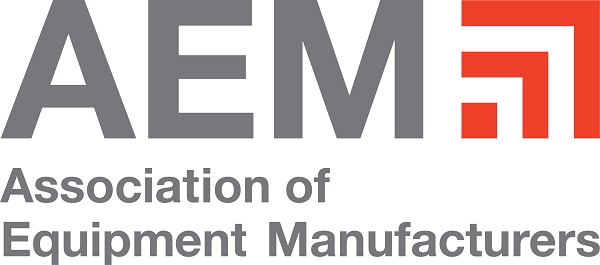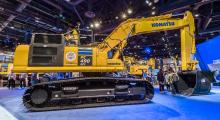
While the latest data shows a modest contraction in direct employment during the last three years, the industry's total output in Canada expanded by 2.6% from $38 billion to $41 billion during the same period. The Canadian data is part of a report prepared by the Market Intelligence Team at S&P Global and details the impact of the three major sectors – agriculture, construction and mining – that comprise the equipment manufacturing industry.

Key findings on the state of the Canadian equipment manufacturing industry include:
- The off-highway equipment and ancillary products industry supports 152,000 total employees in Canada, including 66,000 direct jobs in firms producing off-highway equipment.
- Direct employment contracted by 2.1% from 2019 to 2022, reducing nearly 1,500 jobs.
- The direct employment driven by the off-highway equipment and ancillary products industry represented 4.2% of Canada’s total manufacturing employment in 2022.
- The 152,000 total jobs supported by the industry generate $11.5 billion in labour income, with an average annual wage for direct industry employees of $75,500.
- The off-highway equipment and ancillary products industry generated $17.6 billion in economic value in Canada, representing just under 1% of 2022 total nominal GDP.
The latest report forecasts a slight recession followed by a recovery for the equipment manufacturing industry in Canada, as real output is expected to decline by 1% and increase again by 1% in 2024.
Some segments are expected to fare better than others. Energy-related equipment should see strong performance. Construction equipment is also expected to experience growth due to large backorders because much of it is also related to energy. Additionally, infrastructure projects will help both sectors.
“Both federally and provincially, we are seeing strong support from governments to expand critical mineral mining in a big way, which should see benefits for mining equipment and overall job growth. The 152,000 jobs our industry already supports would fill the Bell Centre in Montreal seven times over. We hope to see more pro-manufacturing policies put in place to ensure the success of our industry for generations to come,” said AEM president Megan Tanel.

Ontario has the largest concentration of jobs in manufacturing off-highway equipment, with 26,000 jobs across the province. Quebec and Alberta are home to the bulk of the remaining direct employment, with 15,600 and 10,000 jobs, respectively. These three provinces make up 78% of our industry’s direct employment within Canada.
“At Linamar, we supply both the agricultural industry with our MacDon and Salford businesses and the construction industry with our Skyjack business at thriving operations in Canada. We see these areas as key growth markets for us and rely on our excellent teams in Canada to produce high-quality technically superior products extremely efficiently,” said Linda Hasenfratz, CEO of Linamar Corporation and 2023 AEM Board Treasurer. “We believe the coming decade will see strong growth in manufacturing in these sectors in Canada, thanks to our strong and welcoming immigration policy, excellent government support, and clean energy grids.”
The report projects that there will be a slightly weaker performance for agricultural equipment and material handling equipment because of less consumer spending on goods and weaker housing. Higher interest rates will also pressure the investment in equipment.

![[Big picture] AEM chair: Robert Crain, Sr. VP, customer experience, AGCO, [Top row, left] vice chair: Rod Schrader, chairman & CEO, Komatsu America [Top row, right] Ag chair: Todd Stucke, senior VP marketing, product support & strategic projects, Kubota Tractor Corp (Bottom row left) - CE chair: Stephen Roy, president of Region North America, Volvo Construction Equip. (Bottom row right) - treasurer: Linda Hasenfratz, CEO, Linamar (Source: AEM) Association of Equipment Manufacturers board of directors 2022 construction board](/sites/agg/files/styles/medium/public/2021-11/%5BBig%20picture%5D%20AEM%20chair%20Robert%20Crain%2C%20Sr.%20VP%2C%20customer%20experience%2C%20AGCO%2C%20%5BTop%20row%2C%20left%5D%20vice%20chair%20Rod%20Schrader%2C%20chairman%20%26%20CEO%2C%20Komatsu%20America%20%5BTop%20row%2C%20right%5D%20Ag%20chair%20Todd%20Stucke%2C%20senior%20VP%20marketing%2C%20product%20support.jpg?itok=MmDmKwqn)








